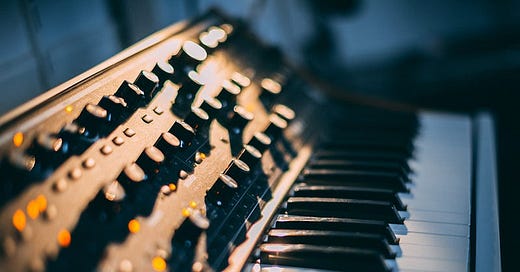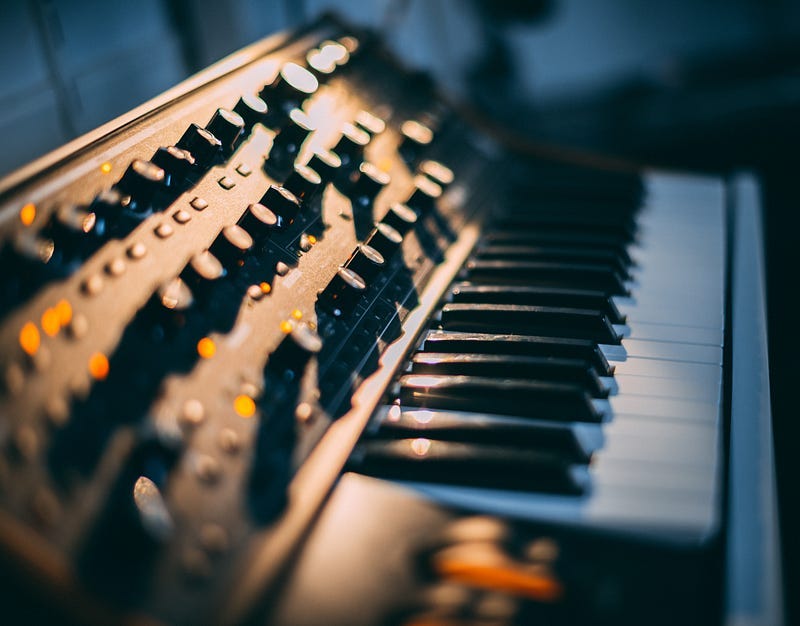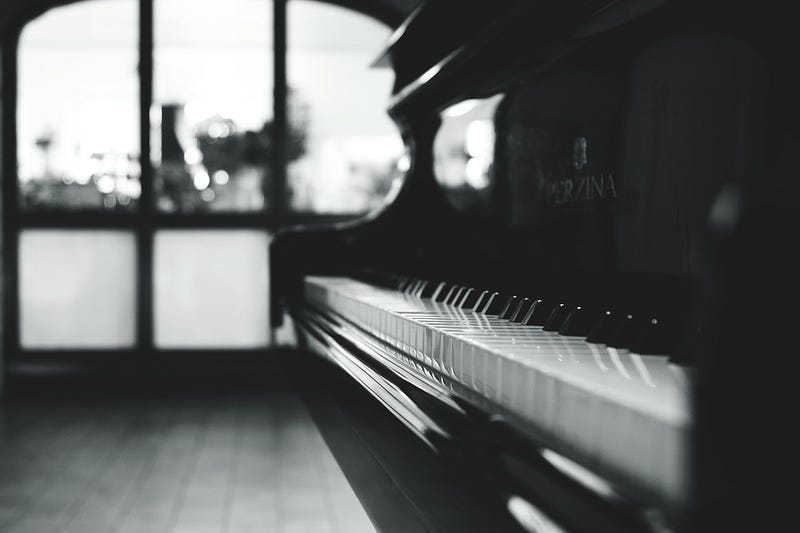How Musicians Translate Feeling Into Sound — The Process & End Product (Explained by Rachel…
How can a song — written by a perfect stranger — feel as if it were written about you?
How can a song — written by a perfect stranger — feel as if it were written about you?
The process of how music goes from the inner sphere of the artist, the inner workings of an artist’s mind & feelings & emotions & then translating into a tangible end product that resonates with people around the world, is a process that is rather profound, sacred & revelatory in itself.
As an upcoming musician, artist, composer & producer myself, I’ve come to write about & reflect on the process in several ways, whether in my notebooks or here on Medium or on my personal blog.
There’s a certain elegance of how a song goes from just a feeling or idea into its full form & shape.
The process & the essence of what’s happening is converting a human emotion, experience, idea or feeling into structures within the sonic medium.
Australian-born European artist Claudio (full name Rachel Claudio) calls this process ‘translation’
“How does a great song lay out your emotional experience as if the songwriter had been eavesdropping on your internal dialogue?”
“Like they were strumming your pain with their fingers and hitting you like a memory.”
“I’ve been obsessed with this as long as I can remember.”
“The taking of something in the inner world, silent, formless, and finding a way to convert it into a shareable, perceptible sonic language, via rhythms, harmonies, beautiful noise, lyrics, whatever will get you there.”
I call it “translation”
As I’ve recounted & reflected on this before, the process of making music is very much personal for the artist in its conception, but then when it’s heard by a listener takes another form, as the music causes the listener to feel emotions, link memories, hopes, ambitions, & then from being only an artist’s interpretation of something, it evolves & becomes something that can be touched and felt by the collective.
In several old posts of mine about music, I explored how the ancient Indian text the ‘Natyashastra’ called this process of creating music, as tapping into the divine flow or a flow of a higher consciousness, coming from somewhere beyond the artist, although firmly within the artist’s expression.
‘The raga is not in the musician’s hands’
I documented that premise & exploration in another article based on a TED Talk by UK-born musician Nitin Sawhney, called ‘What Is The Point Of Music?’
While in other articles, I touched upon why every artist’s music makes a difference, irrespective of how popular or nascent the artist is in their music making journey, and Tom Waits’ songwriting prowess & key takeaways from Radiohead frontman Thom Yorke’s advice for upcoming musicians while also covering the science behind music from physics, mathematics & biology.
However, this piece reflects primarily on the music making process, and how musicians translate their ideas & feelings into sound & music.
Speaking about how music is a unique art form in the way that it allows humans to express themselves, Rachel Claudio further elaborates,
“It’s a very powerful thing in a world where we don’t always have the tools
or the context to express the fullness of who we are.”
“Music has this unparalleled ability to take all of one’s pain, pull it into a single frame and invite us to relive it with all of the joy of the experience
and none of the suffering.”
“Like a wind turbine converts the wind’s kinetic energy into electrical power, the songwriter has an ability to convert the emotional experience,
the human experience, however transitory, and convert it into redeeming beauty long after the pain has past.”
This facet of music, that allows musicians to express themselves, is something I definitely concur with, and music itself stands alone in the vast ocean of art forms as a medium that allows musicians to fully express their inner selves within the notes, melodies, lyrics, rhythms and motifs.
Being rather introverted, music allows me to express myself fully, in ways that I could have never imagined.
Speaking further about my favourite chord i.e. D minor, Claudio explains,
“This is D minor, a great mind once said that it was the saddest of all keys.
I don’t know why, but it makes people weep instantly.”
“You can do amazing things with D minor. But the thing about D minor is
that it’s not sadness itself.”
“It does not create the sadness. The thing is that we carry the sadness already, that D minor seems to be a harmonic match for a particular kind of sadness”
However, to really create compelling music, it involves a long learning curve, & you’ve got to make music based on what your skill level is on the instruments or in your knowledge & expertise of production software, & all the various skills required to make music. It’s a long process & journey & never ends.
“I’ve spent my entire life trying to accurately convert the human experience into sound.”
“And for that conversion, we either need to find or build a sonic vocabulary”, Claudio says
However, I would argue, given my journey with music software and instruments, is to just get started with where you are & whatever level you’re at(unless you’re an absolute beginner) & use whatever ‘sonic vocabulary’ you have to get the ball rolling & start creating, and then improve, evolve & grow & develop your sound.
Speaking about her love of the music creation process & self-expression, Claudio explains,
“I loved how the parts interweaved; I loved how, within a chord,
a single note can have the final word on the way you are caused to feel,
or at least which part of your emotional experience it matches up to.”
“In songwriting, just like in language, in order to express a feeling,
you absolutely have to capture and seize the thought, the experience, the memory, the feeling inside the mind and be able to understand it.”
“But in language, we are often using ready-made templates, reaching for the nearest possible word and then adjusting our thoughts accordingly. But in songwriting, just like in art, just like in any accurate or faithful self-expression, sometimes we have to push a little further than that,
beyond the linguistic templates.”
“Sometimes you have to get inside the cracks that exist between the words, or at least between the feelings that already have names. And you have to kind of blindly and bravely feel your way around that very non-illuminated space until you stumble across the light switch in the hope that none of the monsters are real.”
“In art, in faithful self-expression, you go until you’ve lit up the dark space.”
“Tom Waits said it was like trying to capture birds without killing them.
Sometimes you end up with nothing but a mouthful of feathers.”
However, another exploration that Claudio reveals which is also an aspect of the music creation process that she nailed bang on, that I also totally resonate with, is that, the best music I’ve made is alone, sitting by myself in my bedroom studio, working with my instruments & machines.
I’d definitely like to share them with say a girlfriend, for opinion, feedback & advice, & just, you know, to have someone I’m close to and in love with to discuss my musical ideas & creations with at length(but I’m rather painfully single at the moment). But bouncing those ideas of your partner, that’s really great for the process as well, as Thom Yorke explains.
But the core creation process only comes when you’re sitting by yourself just making music on your own, filling the silence of your comfortable space with each note, chord & sound.
But coming back, Claudio reflects on how the greatest ideas she’s made have come while working with musical instruments & technology in solitude.
She says,
“I do love human musicians, and I’ve played with real-life human ones my entire life, but in a production process, I’ve only ever accessed that sacred state of flow in solitude.”
“You know, that state from which the really true stuff comes,
and that’s the only stuff that I kind feel at this point of my life is worthy of sharing.”
“Solo and surrounded by machines, I can kind of pretend that I am unwatched, unjudged, safe and free.”
“And so, these guys make up the vowels, the consonants, the diphthongs,
the slurs, the cadences and the swear words in my current sonic language.”
Further explaining her process of using technology & instruments that are available to us in these times, Claudio calls her instruments “wolves” and calls the technology “fickle”, rather amusingly.
“These guys are like my pet wolves, in that it’s technology and technology is fickle.
And they often sabotage me, but it’s the price that I am willing to pay
for this feeling as close to the source as electronically, technologically, humanly possible right now,
For as little as possible to be lost in the conversion, for the essence of who we are to not be lost in translation.”
In her intriguing TED Talk, along with an explosive performance of one of her songs, Perth-born European artist Rachel Claudio or simply ‘Claudio’ explains the process of ‘translation’ & how she & other artists express themselves & the impart ‘feelings’ & ‘emotions’ within the sonic sounds & language of music, that go from being personal to something for the collective.





